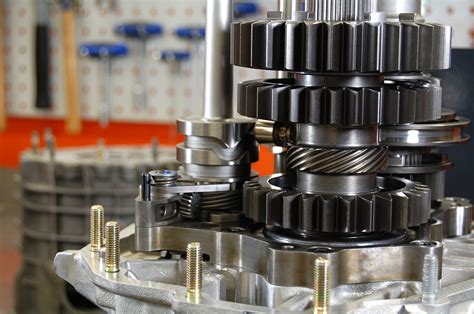Advanced Gearbox Service Techniques: Beyond the Basic Transmission Flush
The humble gearbox, often overlooked, is a critical component of any vehicle. While a basic transmission fluid change might seem sufficient, achieving optimal gearbox performance and longevity demands a deeper understanding and application of advanced service techniques. This article delves into these advanced techniques, moving beyond the basics to ensure your gearbox operates at peak efficiency.
What is Considered an Advanced Gearbox Service?
Unlike a simple fluid and filter change, advanced gearbox service encompasses a more thorough diagnostic and repair approach. This includes intricate inspections, specialized cleaning processes, and often, component replacement or refurbishment. It goes beyond preventative maintenance and addresses potential issues before they escalate into major, costly repairs.
Advanced Techniques Used in Gearbox Service
Several advanced techniques are employed depending on the gearbox type (manual, automatic, CVT) and the specific problems encountered.
1. Detailed Inspection and Diagnostic Procedures
Before any work begins, a thorough inspection is crucial. This involves:
- Visual Inspection: Examining the gearbox casing for leaks, damage, or signs of overheating.
- Fluid Analysis: Analyzing the transmission fluid for contaminants, such as metal particles or debris, indicating potential wear and tear.
- Performance Testing: Assessing the gearbox's operational characteristics, noting any unusual noises, rough shifting, or slippage.
- Advanced Diagnostics: Utilizing sophisticated diagnostic tools to identify electronic faults, sensor issues, or internal problems within the gearbox's control system.
2. Specialized Cleaning Techniques
Simple draining and refilling isn't enough to remove all contaminants. Advanced techniques include:
- Power Flushing: A more thorough process that uses a machine to circulate specialized cleaning fluid through the gearbox, dislodging built-up deposits and sludge.
- Component Cleaning: Individual components, like solenoids and valve bodies (in automatic transmissions), might require specialized cleaning and testing to ensure proper functionality.
- Ultrasonic Cleaning: This high-frequency cleaning method effectively removes microscopic particles from intricate gearbox parts.
3. Component Repair and Replacement
Advanced gearbox service often involves addressing specific component failures:
- Clutch Pack Replacement (Automatic Transmissions): Worn or damaged clutch packs lead to slippage and inefficient power transfer. Replacement is a complex procedure.
- Valve Body Repair/Replacement (Automatic Transmissions): The valve body controls fluid flow within the transmission. Repair or replacement is crucial for smooth shifting.
- Seal Replacement: Worn seals can lead to leaks, requiring careful replacement.
- Bearing and Gear Replacement: Severe wear or damage to internal components might require individual part replacement.
4. Adaptive Learning Procedures (Automatic Transmissions)
Many modern automatic transmissions employ adaptive learning systems. After a service, resetting and re-learning the transmission's characteristics is often necessary for optimal performance. This involves driving the vehicle under various conditions to allow the transmission control unit (TCU) to adapt to the new conditions.
H2: What are the signs that I need advanced gearbox service?
Several signs can indicate the need for advanced gearbox service. These include:
- Rough Shifting: Hesitation, jerky shifts, or grinding noises during gear changes.
- Slipping Gears: The engine revs without a corresponding increase in vehicle speed.
- Transmission Fluid Leaks: Visible fluid leaks around the gearbox casing.
- Unusual Noises: Whining, humming, or clunking sounds emanating from the gearbox.
- Check Engine Light: A illuminated check engine light, often accompanied by diagnostic trouble codes related to the transmission.
H2: How much does advanced gearbox service cost?
The cost of advanced gearbox service varies significantly depending on the vehicle, gearbox type, and the extent of the repair. It can range from several hundred dollars for a power flush and fluid change to several thousand dollars for major component replacements. A proper quote should only be obtained after a thorough inspection by a qualified mechanic.
H2: How often should I have advanced gearbox service performed?
The frequency of advanced gearbox service depends on several factors, including driving style, vehicle usage, and the manufacturer's recommendations. While a simple fluid change might be done every 30,000-60,000 miles, advanced services are less frequent, potentially every 60,000-100,000 miles, or as needed based on diagnostic findings.
Conclusion:
Advanced gearbox service is essential for maintaining optimal gearbox performance and extending its lifespan. While more expensive than a basic fluid change, the potential savings from avoiding catastrophic failures far outweigh the cost. By understanding these advanced techniques and seeking professional service when necessary, you can ensure your vehicle's transmission remains a reliable and efficient part of your driving experience. Remember to always consult a qualified mechanic for diagnosis and repair of your gearbox.

